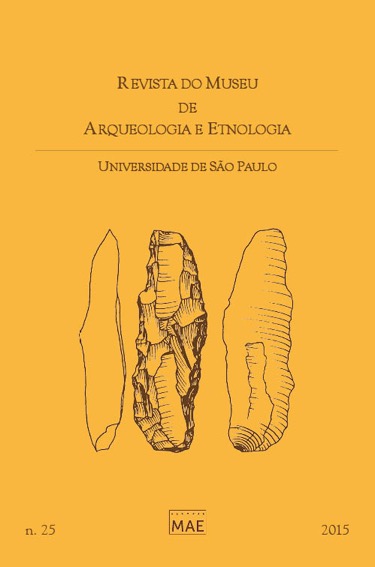A New Concept of Knapping in Southern Brazil: blade technology near the Chapecó river (SC / RS)
DOI:
https://doi.org/10.11606/issn.2448-1750.revmae.2015.114852Keywords:
Lithic technology, blade technology, Early Holocene, Umbu Tradition, brazilian prehistoryAbstract
This article presents the technological study of lithic collections from
three archaeological sites located near the at the mouth of the Chapecó river (Alto
Alegre 3, Linha Policial 1 and Linha Policial 3), in the states of Santa Catarina and
Rio Grande do Sul, dated to the early Holocene and associated with archaeological
materials of the Umbu Tradition. We will present the operational schemes of blade
production, described for the first time for Brazilian prehistory. Despite the lack of
cores, analysis of the blades has established the methods and techniques for their
production and the functional potential of blade blanks. With this study, we affirm
the necessity of developing detailed technological analyses to understand the settling of South America in all its complexity
Downloads
Downloads
Published
Issue
Section
License
Copyright (c) 2015 Sirlei E. Hoeltz, Antoine Lourdeau, Sibeli A. Viana

This work is licensed under a Creative Commons Attribution-NonCommercial-NoDerivatives 4.0 International License.













